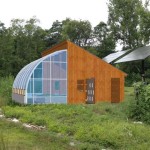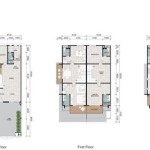House Plant Problem Solving: A Comprehensive Guide
Cultivating a flourishing indoor garden can be a rewarding experience, adding beauty and tranquility to living spaces. However, even the most dedicated plant enthusiasts encounter challenges in maintaining the health and vitality of their houseplants. Understanding the common problems that affect indoor plants and implementing effective solutions is crucial for ensuring their longevity and aesthetic appeal. This article explores a range of houseplant problems and provides practical advice on troubleshooting and resolving them.
Identifying Common Houseplant Problems
Accurate diagnosis is the first step in addressing any houseplant issue. Observing the plant closely and noting specific symptoms is essential. Common problems manifest as changes in leaf color, texture, or shape, as well as alterations in growth patterns. Pests, diseases, and environmental factors can all contribute to plant distress. Careful observation and an understanding of the plant's specific needs are key to determining the underlying cause.
Leaf Discoloration:
Changes in leaf color are often indicative of underlying issues. Yellowing leaves (chlorosis) can point to overwatering, nutrient deficiencies (particularly nitrogen or iron), or insufficient light. Brown spots or edges usually suggest underwatering, low humidity, or fertilizer burn. Pale leaves may indicate insufficient light exposure.Wilting Leaves:
Wilting, or drooping leaves, is typically a sign of water stress. This can be caused by either underwatering or overwatering. In underwatering scenarios, the soil becomes excessively dry, and the plant is unable to absorb sufficient water. In overwatering scenarios, the roots may rot, hindering their ability to absorb water, even if the soil is saturated.Stunted Growth:
Slow or nonexistent growth can be attributed to various factors. These include insufficient light, nutrient deficiencies, rootbound conditions, or pest infestations. Plants require adequate light to photosynthesize and produce energy for growth. Nutrient deficiencies limit the availability of essential building blocks for plant tissue. Rootbound plants lack the space to expand their root system, hindering nutrient and water uptake. Pest infestations can divert resources away from growth.Leaf Spots:
Leaf spots can be caused by fungal or bacterial infections. These spots often appear as small, circular lesions on the leaves. Overcrowding, poor air circulation, and excessive moisture can promote the development of these diseases.Pest Infestations:
Houseplants are susceptible to a variety of pests, including aphids, spider mites, mealybugs, and scale. These pests can damage plant tissue by feeding on sap, leading to leaf discoloration, stunted growth, and deformation. Early detection and prompt treatment are essential for controlling pest infestations.Addressing Environmental Factors
Environmental factors, such as light, water, humidity, and temperature, play a crucial role in plant health. Optimizing these factors can resolve many common houseplant problems. Understanding the specific requirements of each plant species is paramount for providing the appropriate environment.
Light:
Most houseplants require bright, indirect light. However, some plants can tolerate lower light conditions. Direct sunlight can scorch leaves, while insufficient light can lead to etiolation (elongated stems and pale leaves). Place plants in locations that provide the appropriate amount of light, and consider using grow lights to supplement natural light during periods of low light intensity, especially during winter months.Watering:
Overwatering and underwatering are common mistakes that can lead to significant plant problems. The frequency of watering depends on the plant species, the size of the pot, the type of soil, and the environmental conditions. Allow the top inch of soil to dry out before watering again. Ensure that the pot has drainage holes to prevent waterlogging. Adjust watering frequency based on the season, reducing it during periods of dormancy.Humidity:
Many houseplants, particularly tropical species, benefit from high humidity. Low humidity can lead to dry, brown leaf tips and edges. Increase humidity by misting plants regularly, placing them on pebble trays filled with water, or using a humidifier. Grouping plants together can also help to increase humidity levels in the immediate vicinity.Temperature:
Most houseplants thrive at temperatures between 65°F and 75°F (18°C and 24°C). Avoid exposing plants to extreme temperatures, such as near drafts or heating vents. Sudden temperature fluctuations can stress plants and make them more susceptible to problems.Soil:
Using appropriate soil is crucial for plant health. Most houseplants prefer well-draining potting mix. Avoid using garden soil, as it can compact and retain too much moisture. Repot plants every one to two years, or when they become rootbound, to refresh the soil and provide more space for root growth.Managing Pest and Disease Issues
Pest and disease problems can significantly impact plant health. Early detection and prompt treatment are essential for controlling these issues. Implementing preventative measures can also help to minimize the risk of infestations and infections.
Pest Control:
Common houseplant pests include aphids, spider mites, mealybugs, and scale. These pests can be controlled using various methods, including insecticidal soap, horticultural oil, and neem oil. Apply these treatments according to the product instructions, and repeat as necessary to eliminate the pests. Consider introducing beneficial insects, such as ladybugs or lacewings, to help control pest populations. Regularly inspect plants for signs of pests, and isolate any infested plants to prevent the spread of the infestation.Disease Management:
Fungal and bacterial diseases can cause various symptoms, such as leaf spots, root rot, and stem rot. Preventative measures include providing good air circulation, avoiding overwatering, and removing any infected plant material. Fungicides and bactericides can be used to treat certain diseases, but it is essential to identify the specific disease before applying any treatments. Proper sanitation practices, such as cleaning pots and tools, can also help to prevent the spread of diseases.Natural Remedies:
Several natural remedies can be used to control pests and diseases. Neem oil is a broad-spectrum insecticide and fungicide that can be used to treat a variety of problems. Garlic spray can be used to repel pests. Baking soda solutions can be used to control fungal diseases. These remedies are generally less toxic than synthetic pesticides and fungicides, making them a safer option for indoor plants.In summary, successfully managing houseplant problems requires careful observation, accurate diagnosis, and timely intervention. By understanding the common issues that affect indoor plants and implementing appropriate solutions, plant enthusiasts can cultivate healthy and thriving indoor gardens. Regular maintenance, including proper watering, fertilization, and pest control, is essential for preventing problems and maintaining plant health.

Biggest House Plant Problems And How To Solve Them From The Rescuer

Houseplant Sos The Ultimate Guide To Solving Common Plant Problems

Solve Your Leaf Problems On House Plants Experts And Indoor Plant

Indoor Plant Care House Plants Experts And

Why It Looks Like Your Houseplant Is Losing Soil What To Do About

Solving Water Problems For Indoor Plants

How To Identify And Solve Pests Problems On Indoor Plants Master Gardening 3 4

7 Most Common House Plants Problems And How To Solve Them My Tasteful Space

7 Most Common House Plants Problems And How To Solve Them My Tasteful Space

Fiddle Leaf Fig Problem And Issue Guide Our House Plants








